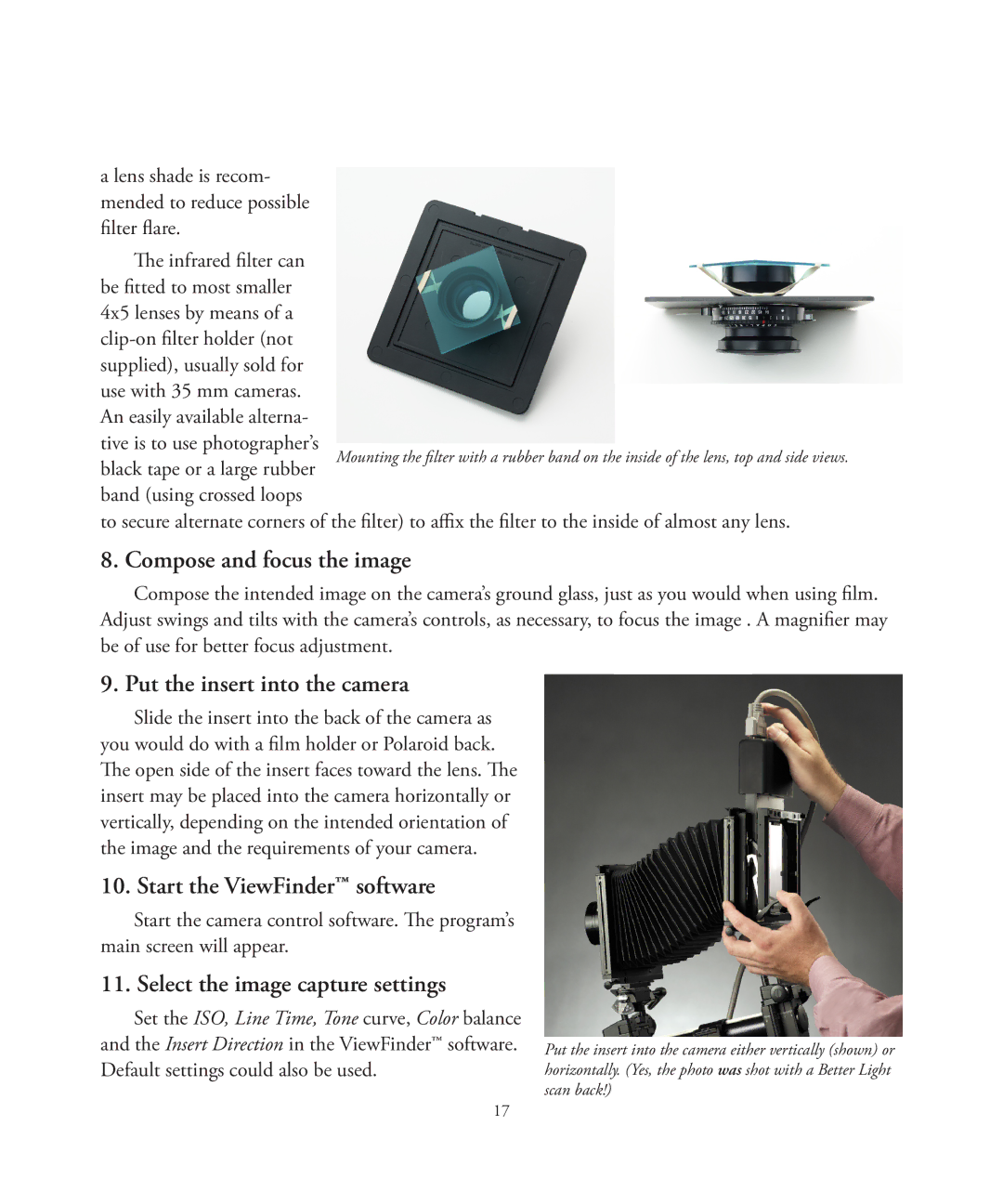
a lens shade is recom- mended to reduce possible filter flare.
The infrared filter can be fitted to most smaller
4x5 lenses by means of a
to secure alternate corners of the filter) to affix the filter to the inside of almost any lens.
8. Compose and focus the image
Compose the intended image on the camera’s ground glass, just as you would when using film. Adjust swings and tilts with the camera’s controls, as necessary, to focus the image . A magnifier may be of use for better focus adjustment.
9. Put the insert into the camera
Slide the insert into the back of the camera as you would do with a film holder or Polaroid back. The open side of the insert faces toward the lens. The insert may be placed into the camera horizontally or vertically, depending on the intended orientation of the image and the requirements of your camera.
10. Start the ViewFinder™ software
Start the camera control software. The program’s main screen will appear.
11. Select the image capture settings
Set the ISO, Line Time, Tone curve, Color balance and the Insert Direction in the ViewFinder™ software. Default settings could also be used.
Put the insert into the camera either vertically (shown) or horizontally. (Yes, the photo was shot with a Better Light scan back!)
17
